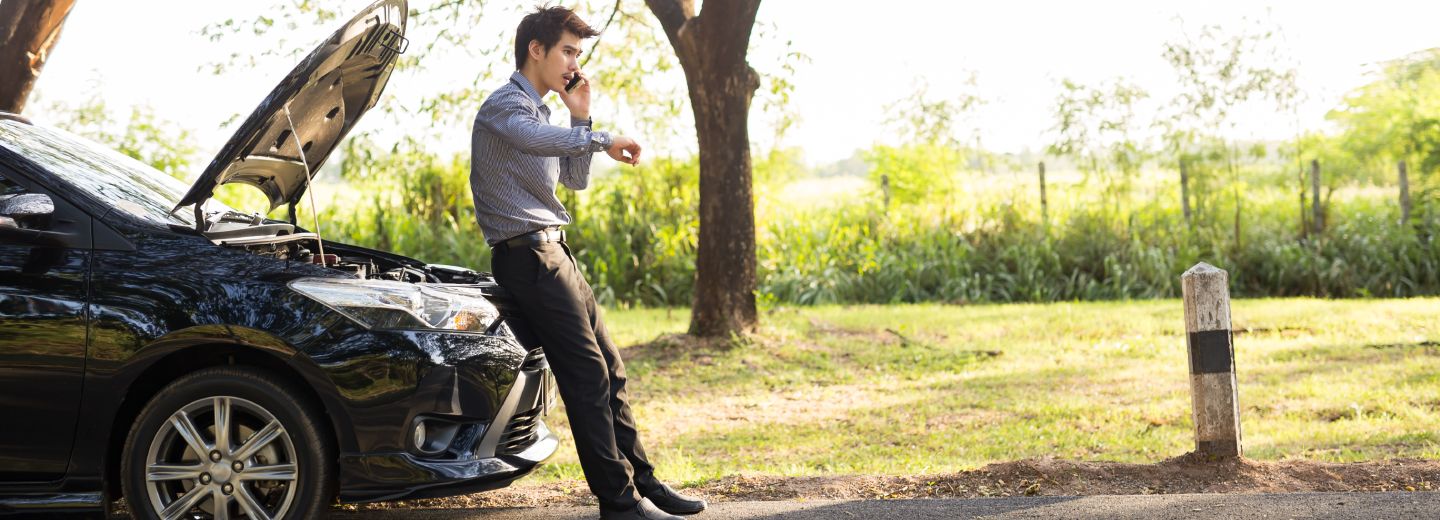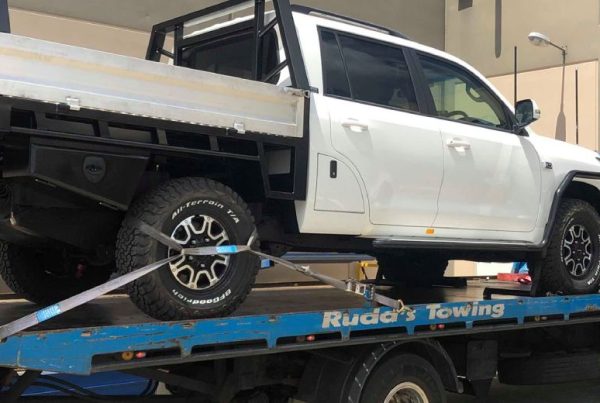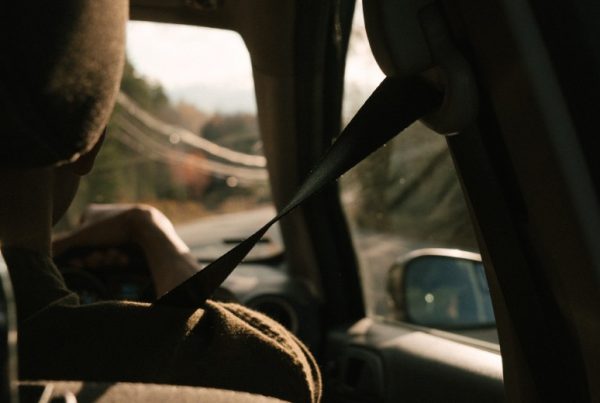Breakdowns happen and not always at a convenient time or place. If you break down in the middle of peak hour traffic or on the highway, it can make for a bad day.
Since it’s not something we ever plan to do, it often catches us off guard. Sometimes though, knowing ahead of time how to handle the situation can help us respond better.
In this article, we’re going to run through some simple tips to make things a bit easier if your car does break down in a bad spot.
Prevention is easier than the cure
I know, I know, you don’t want to hear it but it’s a common saying for a reason. Remember to check your tyre pressure regularly (when they’re cold, not after a long drive!), keep an eye on your coolant, brake and washer fluid and don’t skip those services.
Even if money is tight, spending $30 on some fresh coolant might keep you from being stranded and needing a new engine!
If you can, get your car to a safe location
If you still have some momentum or your car can safely limp off the road, move to the safest place you can find. On the highway, take the next exit if you can make it. Otherwise, move as far to the left as you possibly can.
On a busy road, it’s the same thing. Try to pull into a quiet street or at least move as far to the left as possible.
Generally, traffic will be moving faster in the right lane and you want to stay as far away from that as possible.
Make yourself as visible as you can
It’s important to put your hazard lights on early. Let the other drivers know to put their phone down for a minute and pay attention to life beyond their windscreen.
It’s also a good idea to turn your parkers on so your tail lights stay on too. If it’s getting dark, you can even leave your headlights on. To make it even more clear that you’re stationary and can’t move, lift your bonnet. This way, even from a distance people can see that you aren’t just stopping randomly, you’re broken down.
The more you can do to make sure your car is visible to other drivers, the safer you’re going to be.
If you have a warning triangle in your car and it’s safe to do so, put that out behind your car. Make sure it’s facing oncoming drivers but clear of their lane.
If you don’t have one, it’s a worthwhile investment. Even this one from Bunnings will do the trick and it’s only $10.55!
Assess the situation quickly
Once you’ve come to a stop and made yourself visible, take a look at your surroundings to decide on your next step.
Are you stopped around a blind corner or over the crest of a hill? Still taking up part of a lane and unable to move? Maybe you’re stopped right next to a lane full of fast-moving traffic.
Since breakdowns are usually unexpected, it can be jarring. You might be tempted to immediately get out of the car to see what’s going on but that isn’t always smart. If you’re right next to highway traffic, throwing your door open to get out might end very badly.
Decide if it’s safer in or out of your car
If you’ve made it to a safe location on a quiet street or a large shoulder off an exit, stay in your car with your seatbelt on.
Otherwise, the right move will depend on a few things:
- How easy is it for passing drivers to see and avoid your car?
- If you get out, is there somewhere safer to stand?
- If you have passengers or pets in the car, can you all move quickly and safely?
Essentially, make a judgment call on where you’re going to be safest and move there. If it’s a 50-50, stay in your car with your seatbelt on. If the risk is the same either way, your car has a lot of safety features that just might save you.
Be careful if you decide to get out
If you decide it’s safest to get out of the car, try to do that from the left side, away from traffic. If that isn’t possible for some reason, check your mirrors very carefully before opening your door.
This goes for everyone in the car, too. If you have a little one in a child seat in the back, either take them out through the left door or keep everyone in the car with seatbelts on.
Only call for assistance once you’re as safe as possible
Your first reaction might be to call for help before you’ve really looked around. Sure, you do want to get help on the way quickly but if you’re broken down in a highway lane, sitting there on your phone is a bad choice.
Leave the phone in your pocket until you’ve reduced the risk as much as possible. Then get help on the way.
When it’s safe, then call for help
Now that it’s safe, it’s time to get help on the way. The sooner you can get yourself, any passengers and your car to complete safety the better. This also helps to minimize the disruption to traffic when you’re on a busy road.
Give a trusted company like Rudd’s Towing a call to get your car towed to safety fast. A reliable car towing service like this will be able to guide you through the rest of the process and get you home safely.
Never stand in front of or behind your car
This is something we see far too often and it’s incredibly dangerous. People will stand either behind their car so they can see cars approaching or they’ll stand in front of it as a shield.
The weight of even the smallest cars on the road moving at 60km/h+ (120km/h+ sometimes) can be absolutely lethal. Even if your car is in gear or Park with the handbrake on, the outcome will be catastrophic.
Some drivers may even be distracted trying to figure out why you’re stopped and this can cause them to accidentally swerve toward you. No matter what, either stay in your car or move well away from it.
There’s no such thing as a safe place to stand near your vehicle.
Don’t try to fix your car in a busy spot
You might think this one is common sense but it’s another that we see so often. The side of the highway is never the place to get under your car and see what’s going on.
Remember what I said about never standing near your car? Laying under it is even worse. Not only can you not see what’s happening around you but even if you could, you can’t move out of the way anyway!
Don’t try to waive down other vehicles
If you’re close to an exit or a quiet street, it can be tempting to flag down a passing car for help. It makes sense, right?
The thing is, a broken down car is already an obstacle they need to be aware of and avoid. Throwing in another distraction by waving at them at the critical moment might be all it takes to have them vere toward you.
Especially with motorbikes, we often talk about target fixation — that you’re going to end up wherever you look. You want your car to be visible to other drivers but don’t actively distract them from doing their job of avoiding a collision!
If you have another car with you, make them visible too
It’s not uncommon for someone to come along and offer to help you out. If someone does stop to lend a hand, still be aware of the situation and use them for added visibility.
If it’s safe to push your car a short distance to a better location, have them park 20m – 50m back from yours with their hazard lights and parkers on too. This gives more opportunity for both cars to be seen and offers some degree of a barrier before you try pushing your car.
As always, be smart about it. If adding a second car into the mix makes it more dangerous, thank them for offering to help and send them on their way. Sometimes the best thing to do is stay put until professional help arrives.
Don’t try towing your car with a rope, strap or chains!
We’ve already talked about the do’s and don’ts of towing your own car under normal conditions. If you’re broken down on a busy road, that makes it a hard ‘no’.
Not only is it illegal (Australian Road Rule 125 states that drivers must not unreasonably obstruct the path of another vehicle, which you’ll be doing unless you’re towing at an unsafe speed) but you’re also putting at least two people in unnecessary danger. Not to mention the people around you.
Towing a vehicle means a high workload for both drivers under normal circumstances. Doing it on a busy road is just too much to manage.
Do yourself and other road users a favour and call for professional help. Your life is worth more than the cost of a tow truck.




